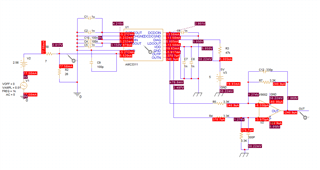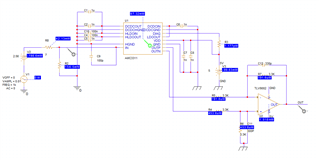Tool/software:
Hello,
I have a question regarding the thermal dissipation and current consumption of the AMC3311. According to the datasheet, the maximum current is specified as 41 mA with no external load on HLDO. However, the graphs in the documentation show a different reality, with a maximum current of 27.5 mA at 5V and 30 mA at 120°C.

Could you clarify in which specific use case the current consumption reaches 41 mA? Additionally, is the defined power dissipation the maximum that the package can handle?
We plan to use the AMC3311 for monitoring supercapacitor cells. The voltage divider resistors will have low values (as show on the simulation below), leading to already high consumption. With a large number of cells (between 20 and 50), the power consumption of the package could become significant, especially considering the approximate 235 mW dissipation. We would like to understand under which conditions the component reaches this specific worst-case current consumption and, consequently, the worst-case dissipation.
In my simulations using the provided model, the power consumption does not exceed 100 mW under normal conditions (20 mA). I’ve attached the simulation results for reference.
Thank you for your insights!
Best regards,






